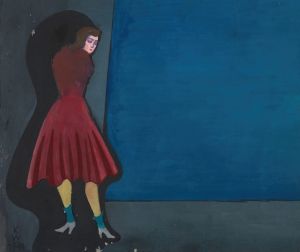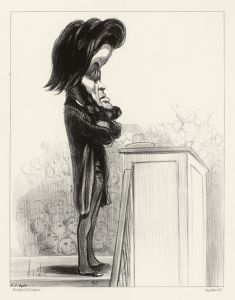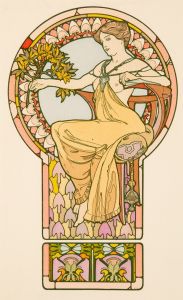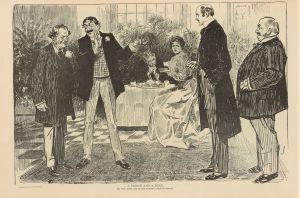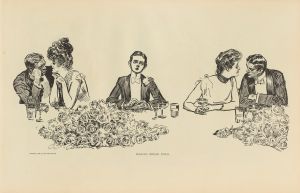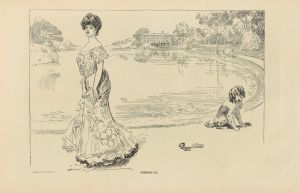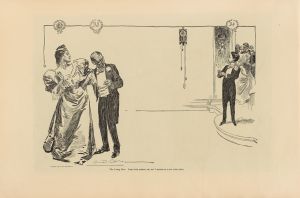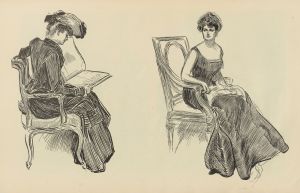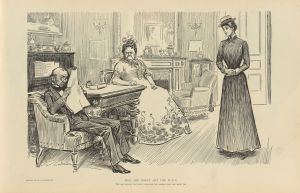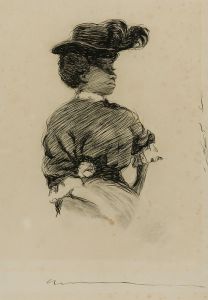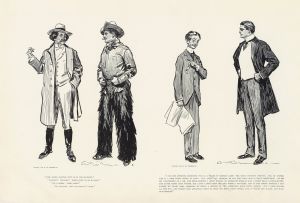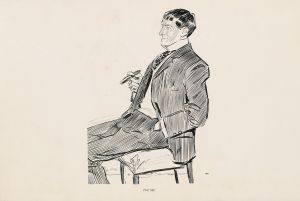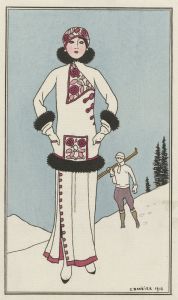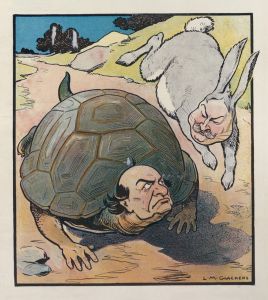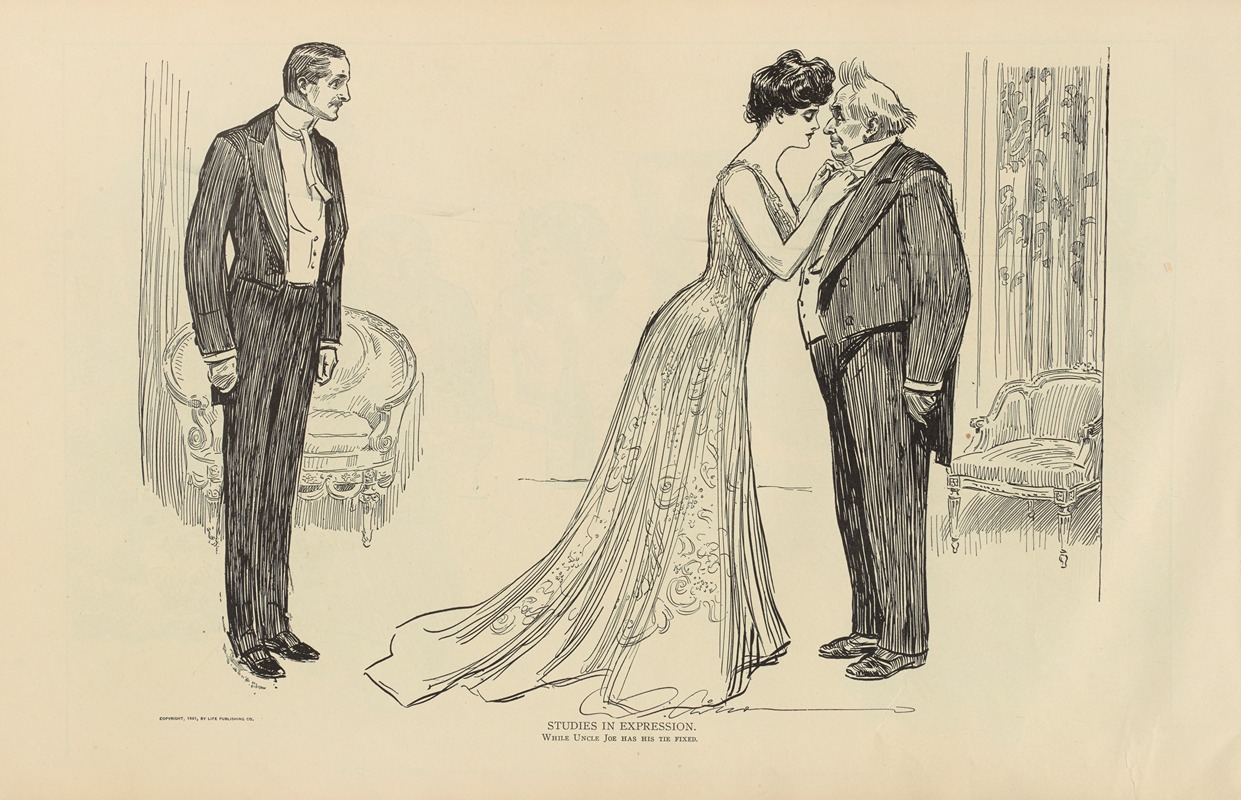
Studies in expression. While Uncle Joe has his tie fixed
A hand-painted replica of Charles Dana Gibson’s masterpiece Studies in expression. While Uncle Joe has his tie fixed, meticulously crafted by professional artists to capture the true essence of the original. Each piece is created with museum-quality canvas and rare mineral pigments, carefully painted by experienced artists with delicate brushstrokes and rich, layered colors to perfectly recreate the texture of the original artwork. Unlike machine-printed reproductions, this hand-painted version brings the painting to life, infused with the artist’s emotions and skill in every stroke. Whether for personal collection or home decoration, it instantly elevates the artistic atmosphere of any space.
"Studies in Expression. While Uncle Joe has his tie fixed" is an illustration by Charles Dana Gibson, an influential American graphic artist and illustrator, best known for his creation of the "Gibson Girl," an iconic representation of the American woman at the turn of the 20th century. This particular work is part of Gibson's broader exploration of social themes and character studies through his art.
Charles Dana Gibson was born on September 14, 1867, in Roxbury, Massachusetts. He began his artistic career at a young age and studied at the Art Students League in New York City. Gibson's work gained popularity in the late 19th and early 20th centuries, primarily through his contributions to magazines such as Life, Harper's Weekly, and Scribner's. His illustrations often depicted scenes of contemporary American life with a keen eye for detail and a subtle sense of humor.
The illustration "Studies in Expression. While Uncle Joe has his tie fixed" is a fine example of Gibson's ability to capture human expressions and social interactions. The artwork portrays a scene where a character referred to as "Uncle Joe" is having his tie adjusted, presumably by a younger family member or acquaintance. The focus of the illustration is on the expressions and body language of the characters involved, showcasing Gibson's skill in rendering nuanced emotional states and interpersonal dynamics.
Gibson's work, including this piece, is characterized by his use of pen and ink, a medium that allowed him to create intricate lines and shading. This technique was well-suited to the reproduction processes of the time, making his illustrations highly suitable for publication in periodicals. His style is marked by a combination of realism and idealism, often highlighting the elegance and sophistication of his subjects.
The "Gibson Girl" phenomenon, which Gibson is most famous for, was a cultural icon that emerged from his illustrations. The Gibson Girl represented an idealized image of youthful femininity, independence, and beauty, influencing fashion and societal norms of the era. Although "Studies in Expression. While Uncle Joe has his tie fixed" does not feature a Gibson Girl, it reflects Gibson's broader interest in capturing the subtleties of human expression and social interaction.
Gibson's work had a significant impact on the field of illustration and popular culture during his lifetime. His ability to convey complex emotions and social commentary through simple yet effective imagery earned him a lasting place in the history of American art. "Studies in Expression. While Uncle Joe has his tie fixed" is a testament to Gibson's talent for observation and his contribution to the visual arts.
In summary, Charles Dana Gibson's "Studies in Expression. While Uncle Joe has his tie fixed" is a notable example of his artistic style and thematic interests. Through this illustration, Gibson continues to be celebrated for his ability to depict the intricacies of human expression and the social fabric of his time.





